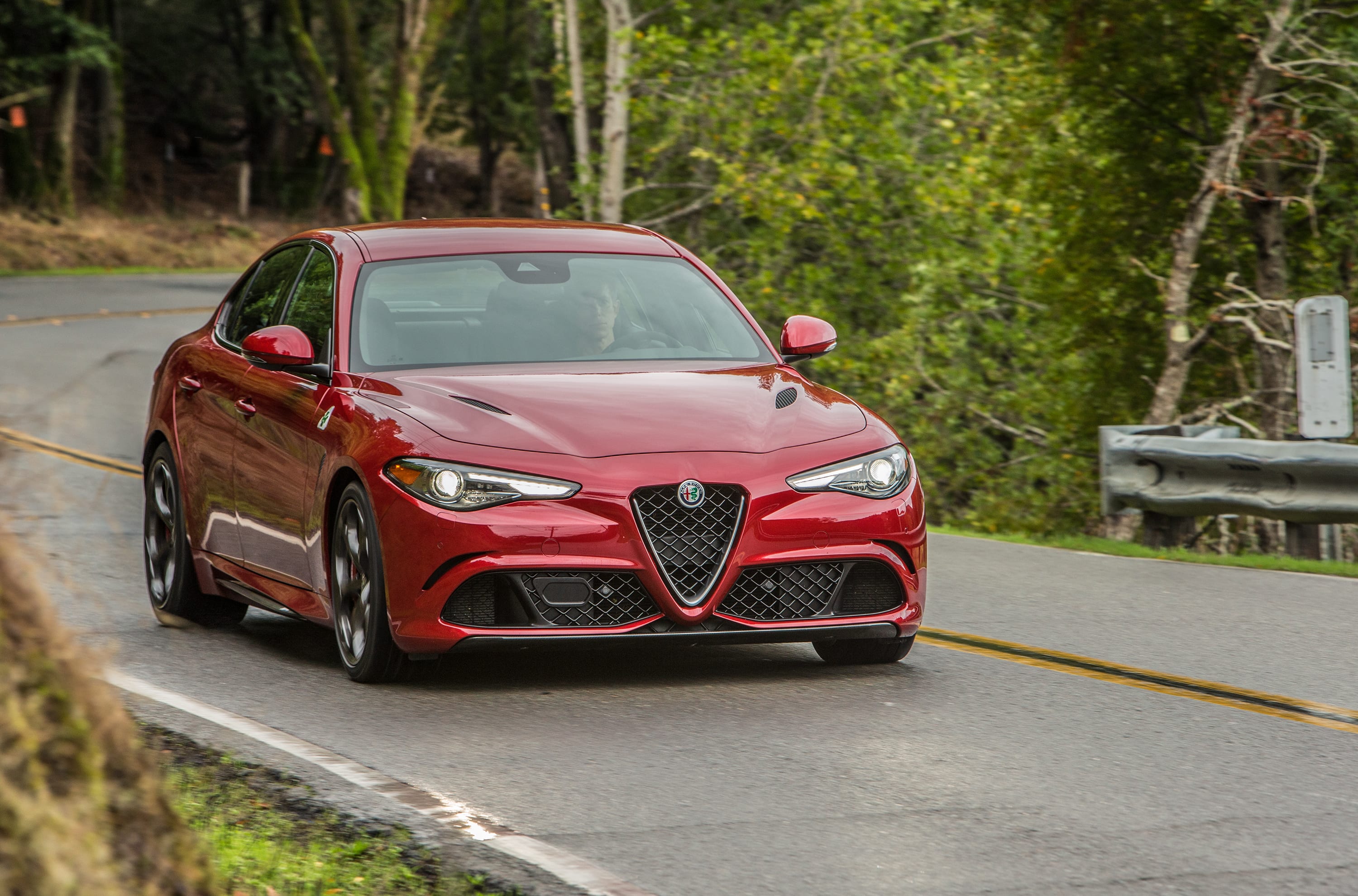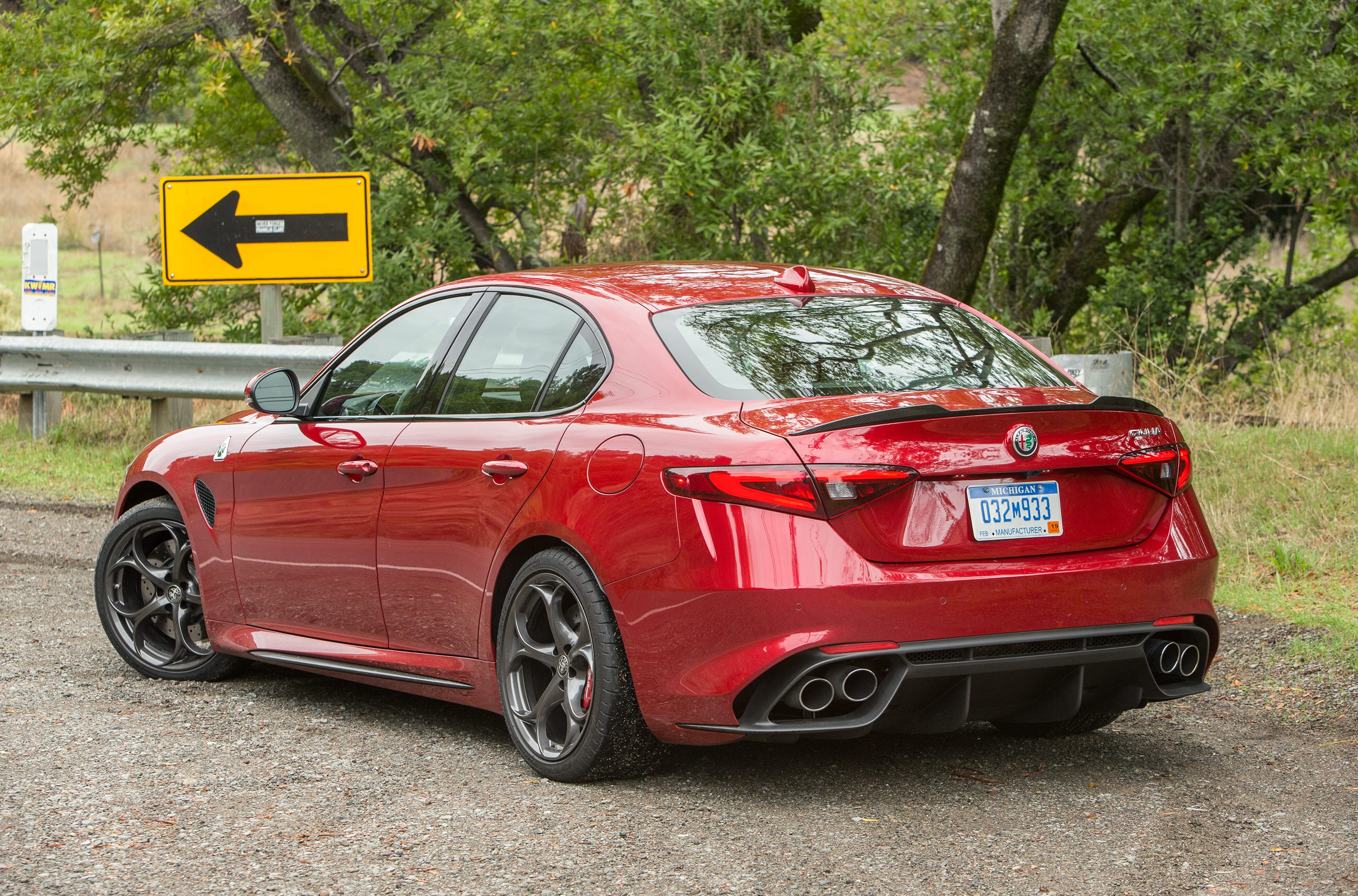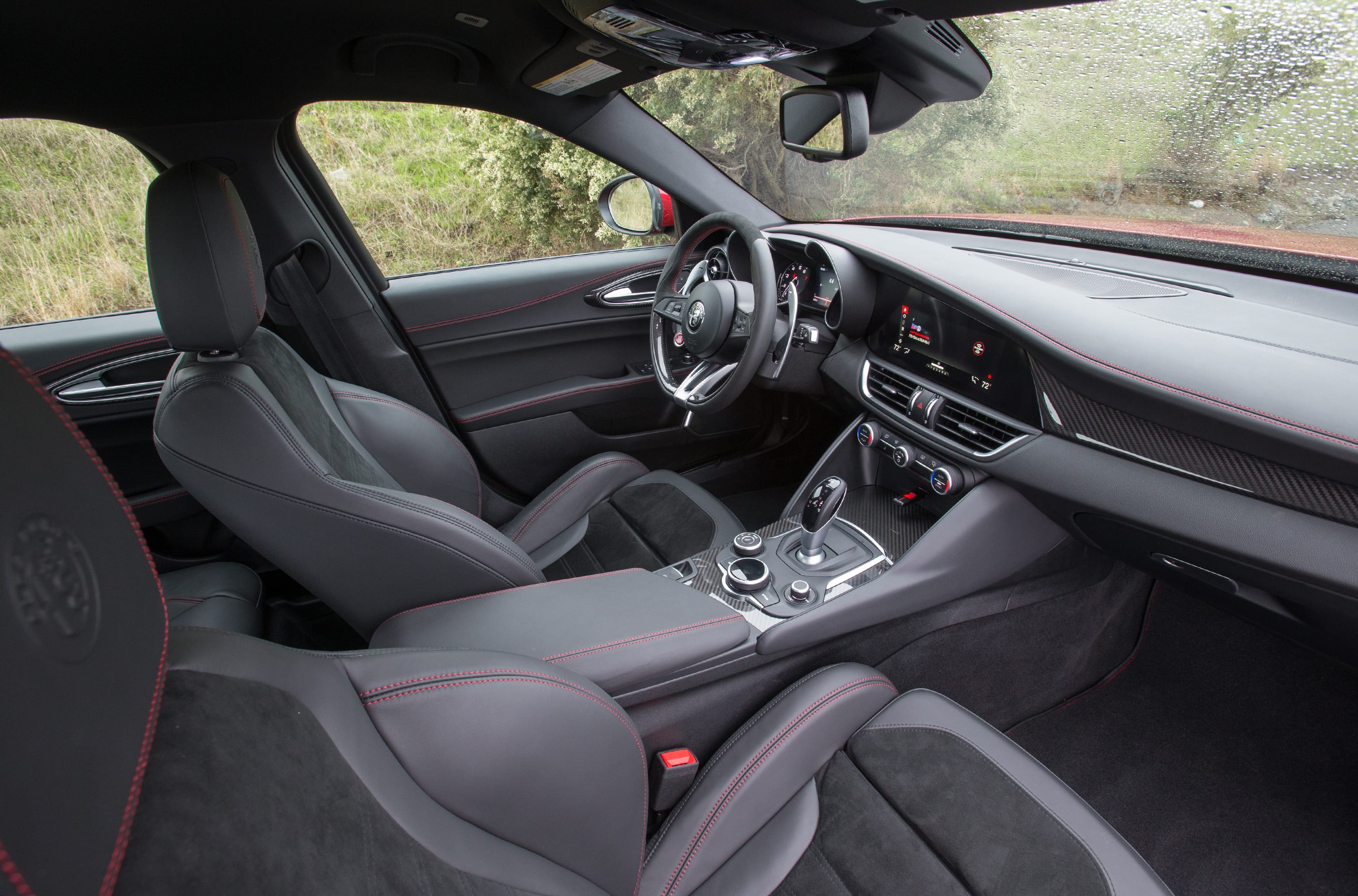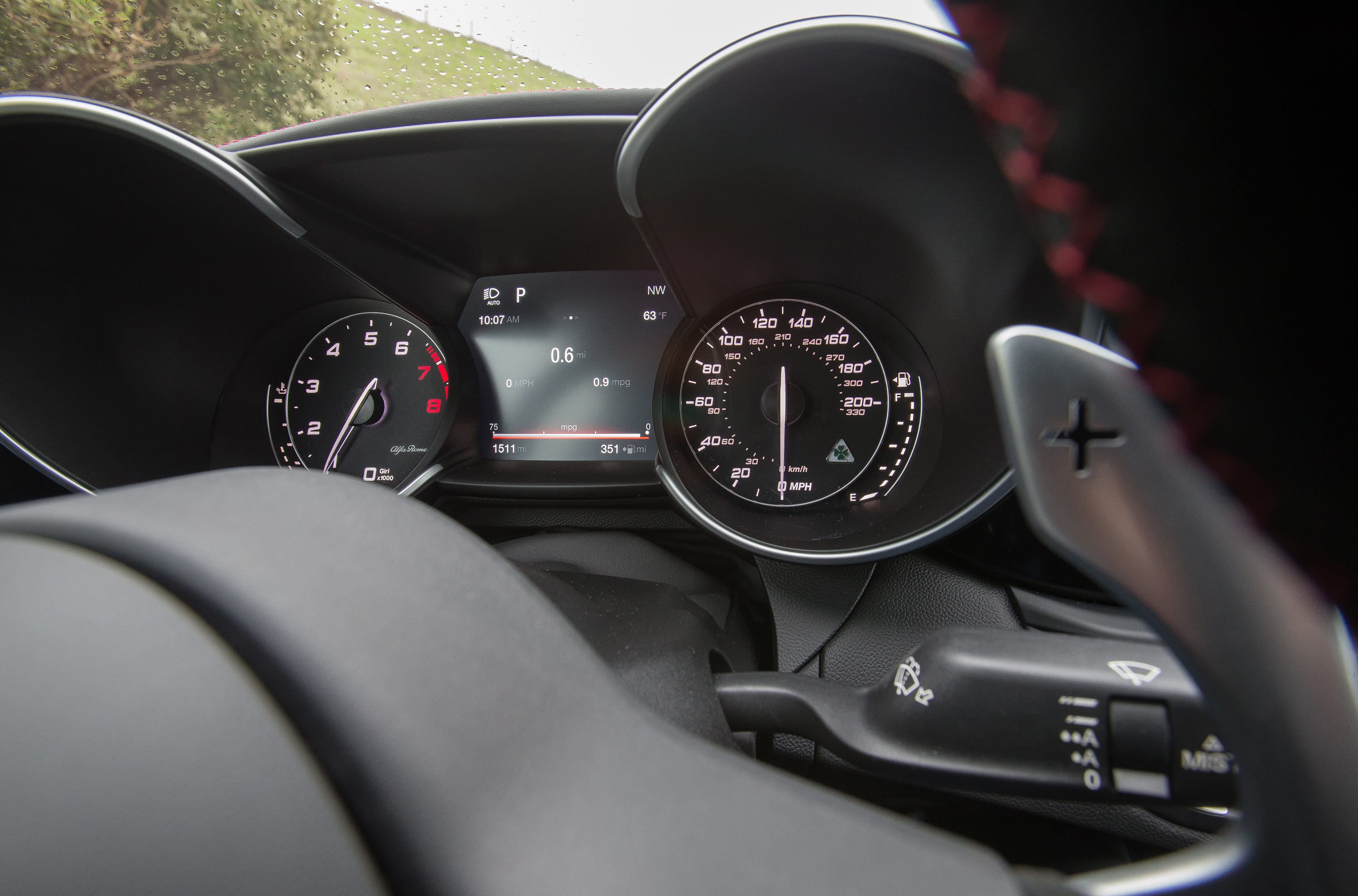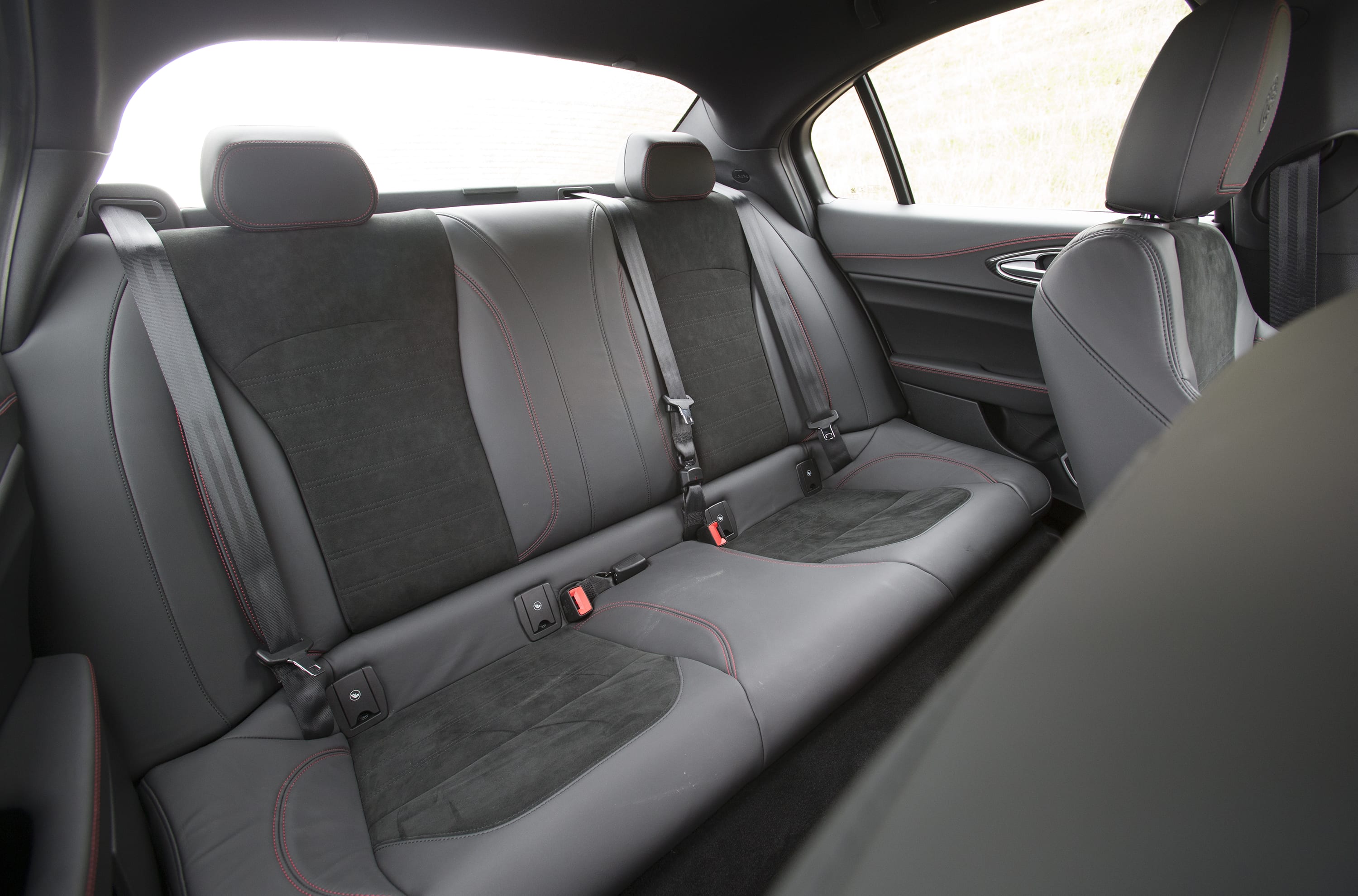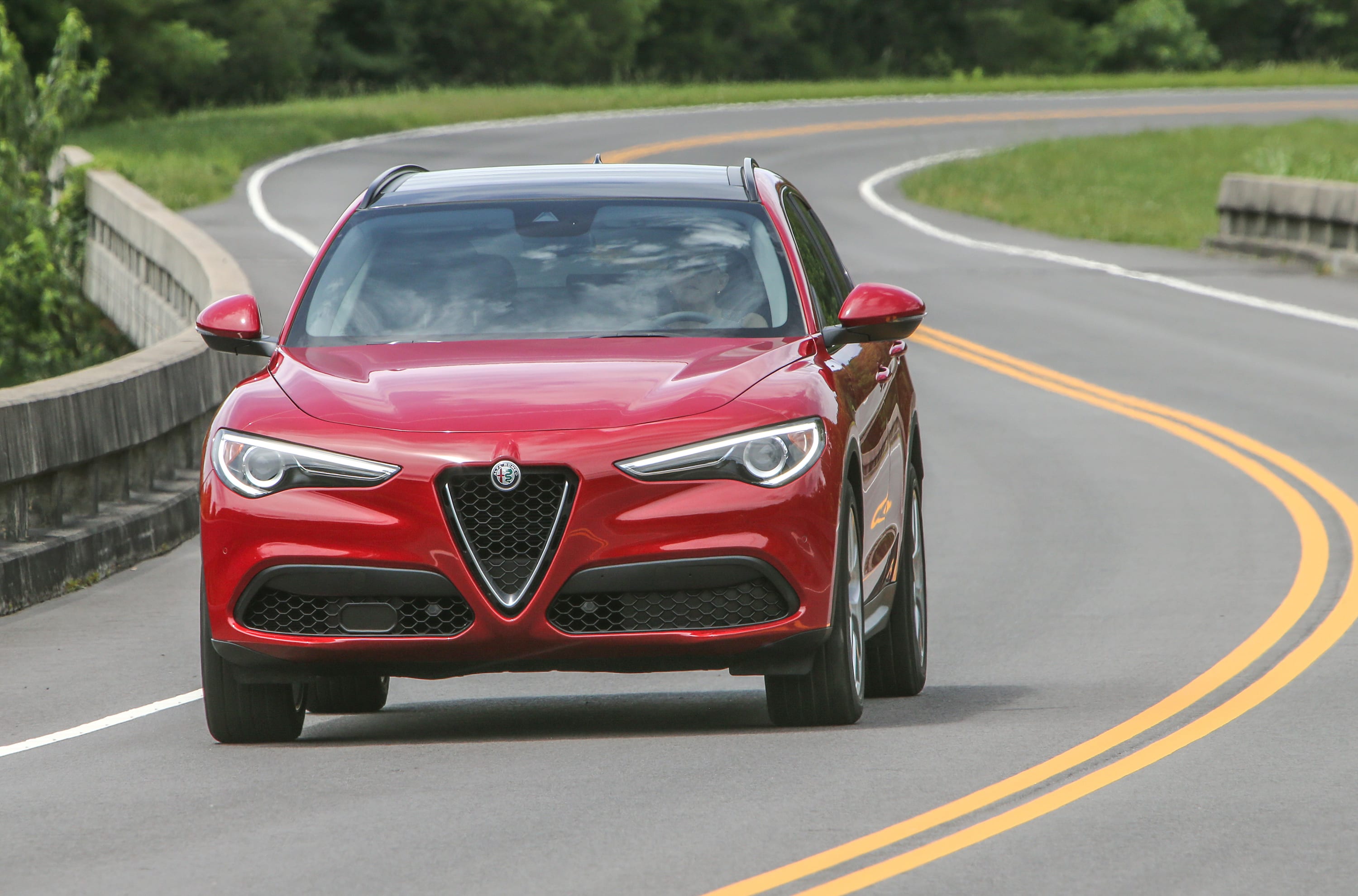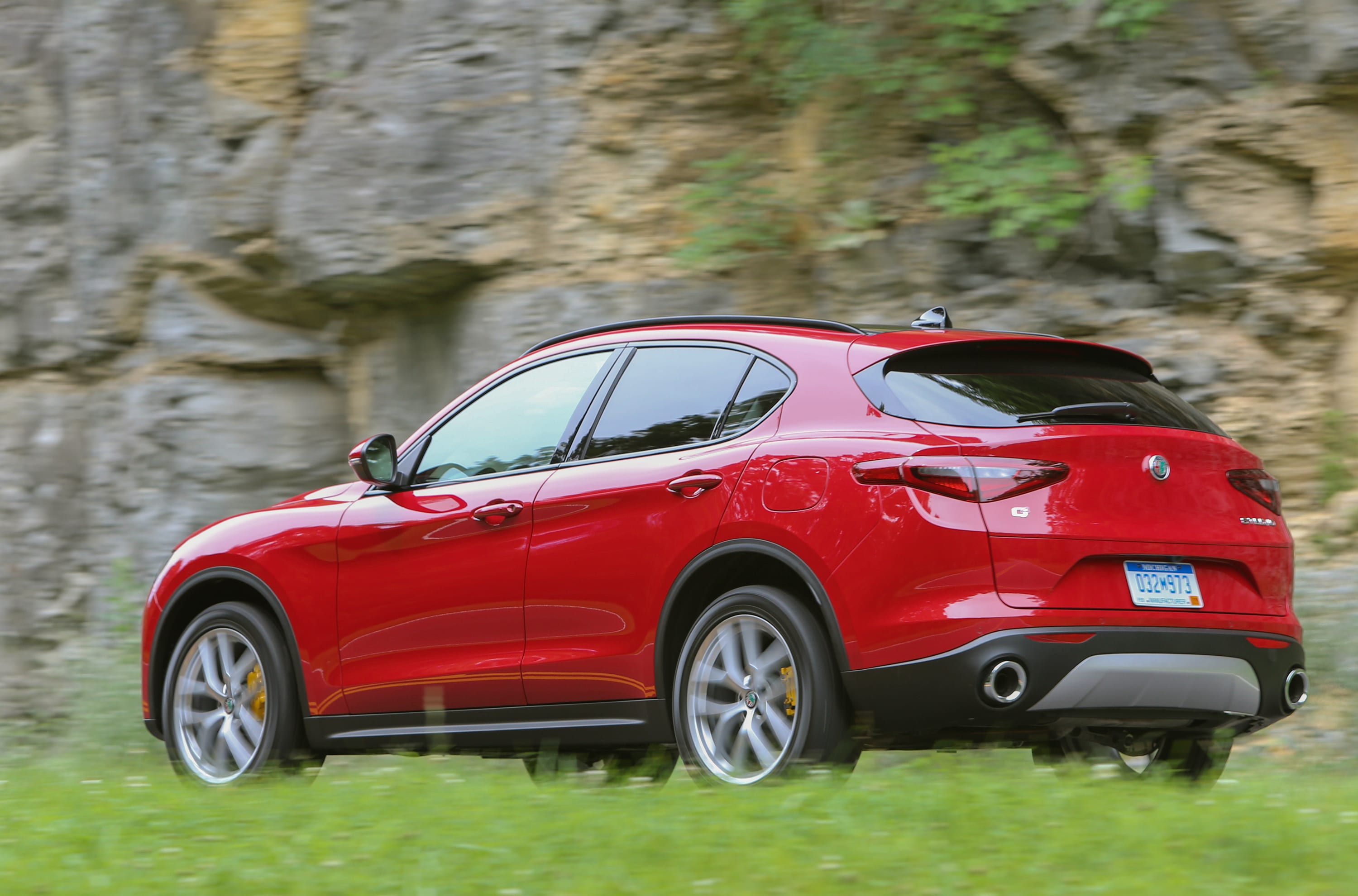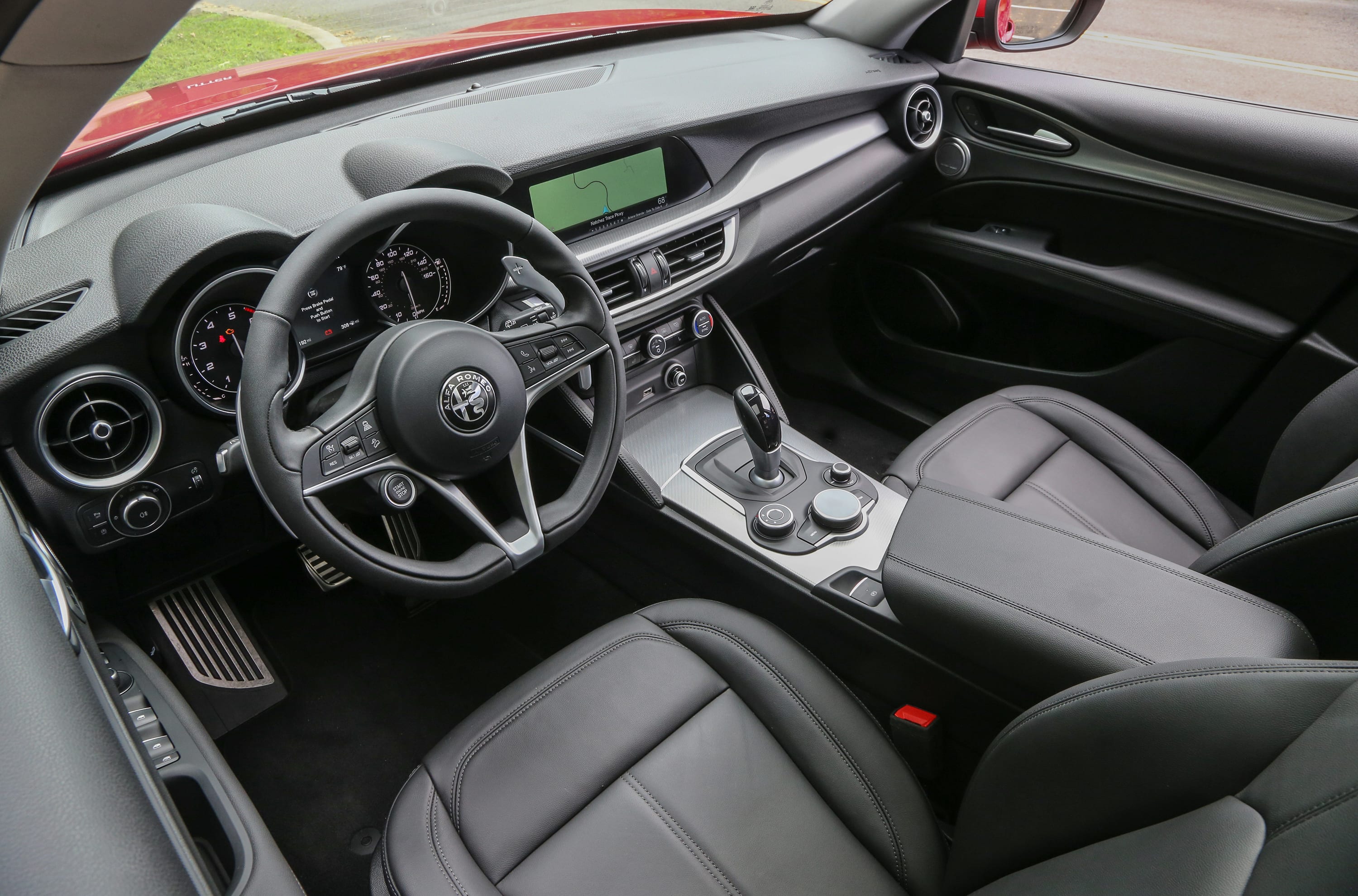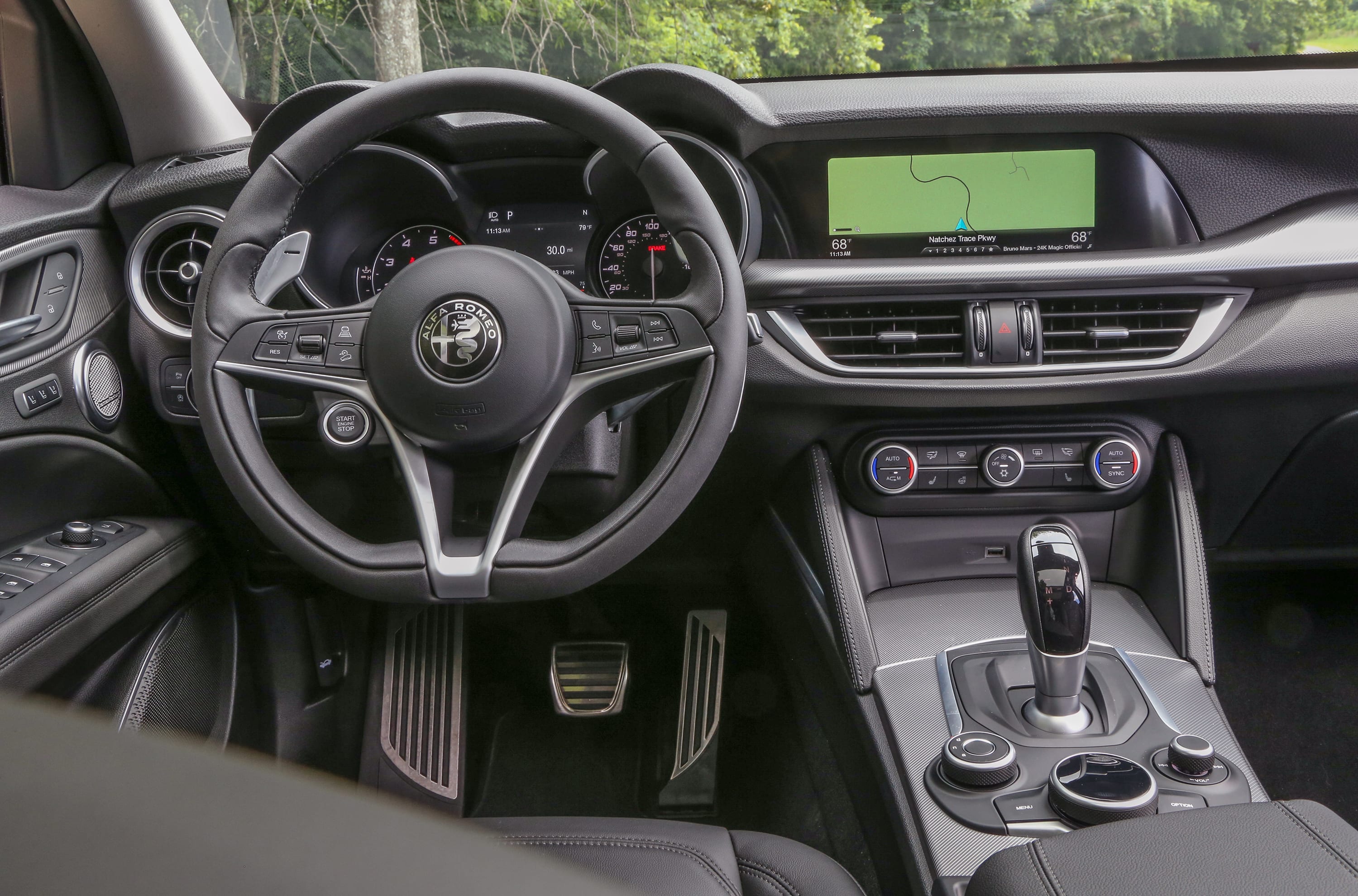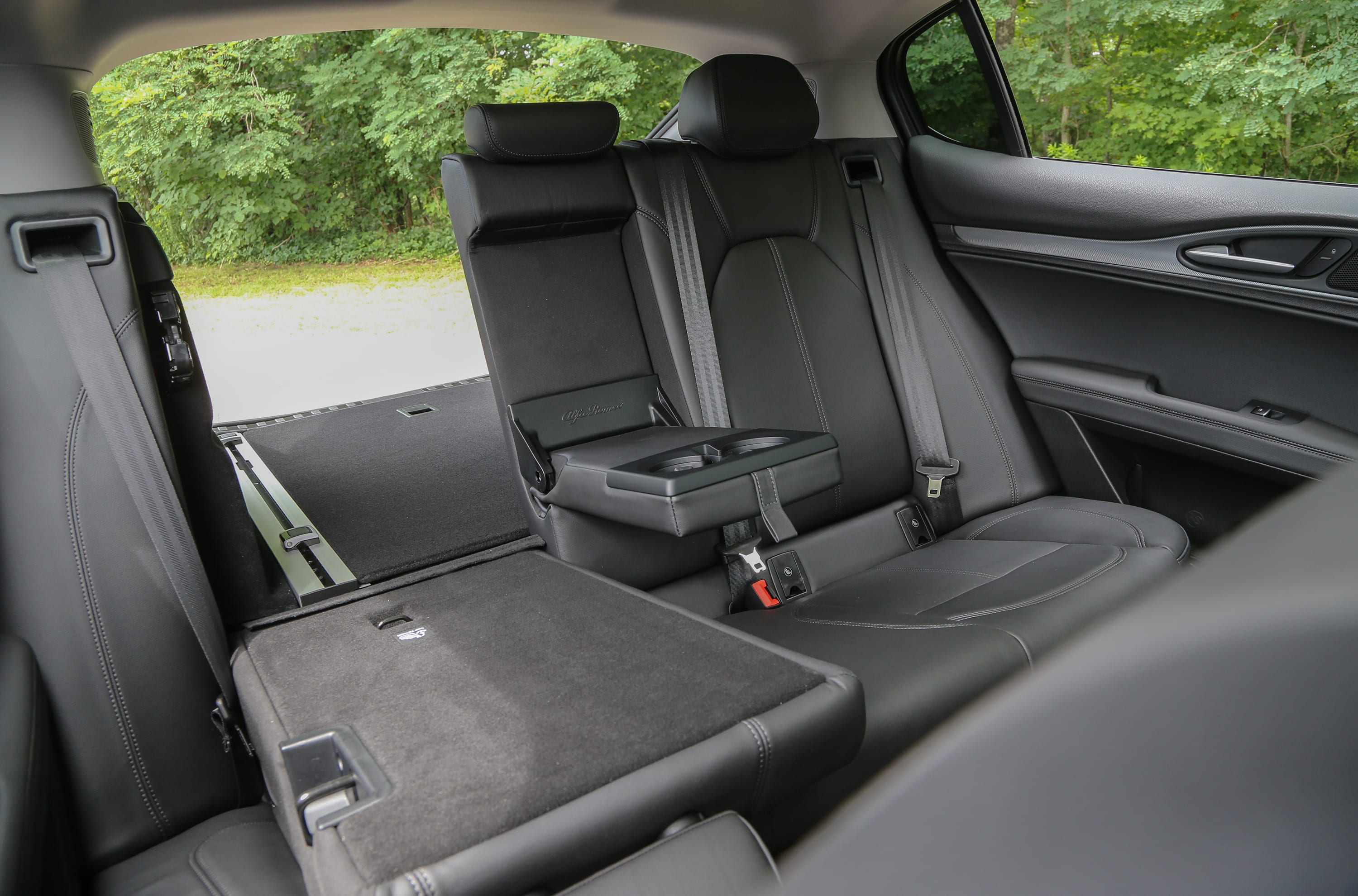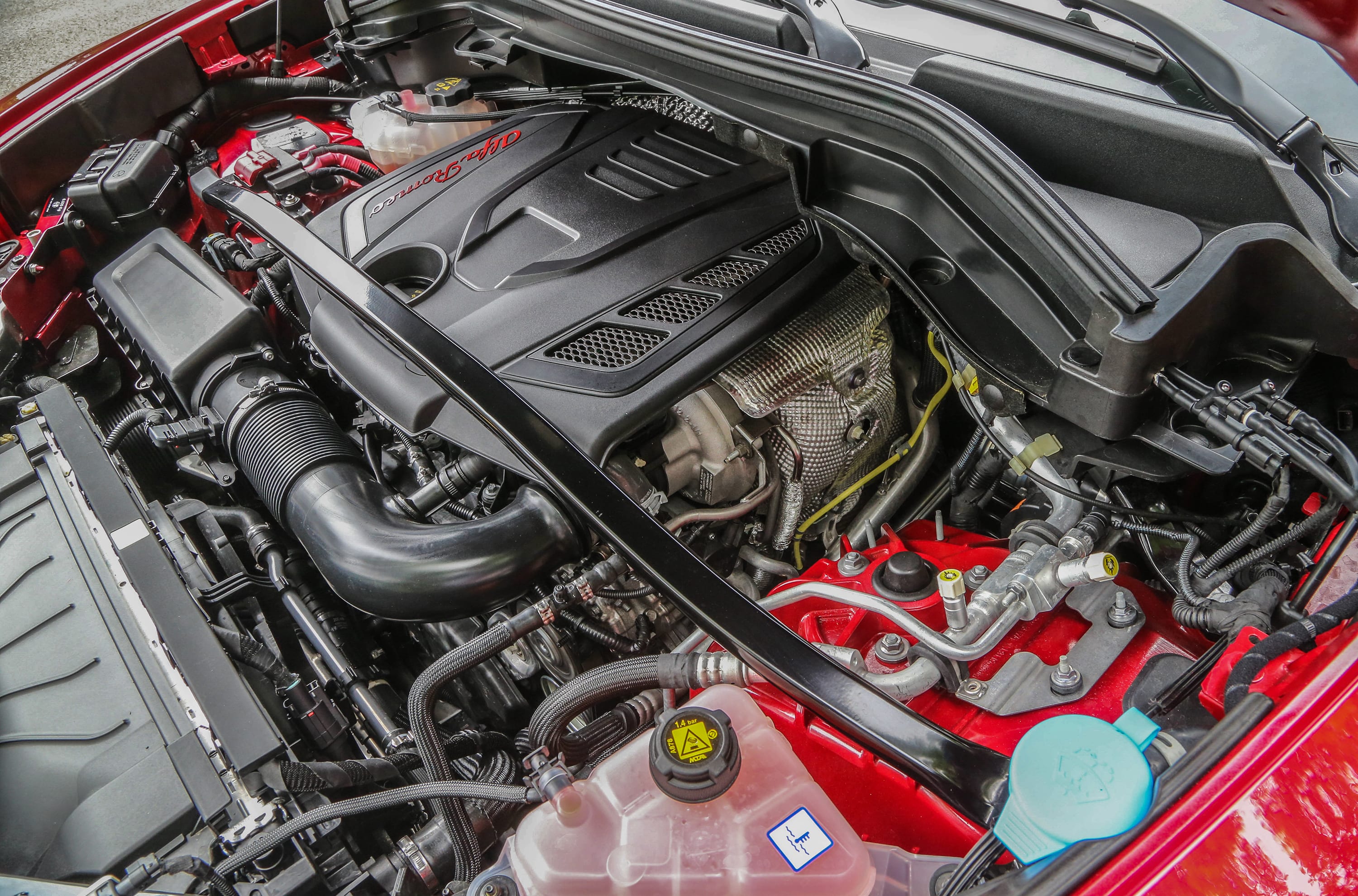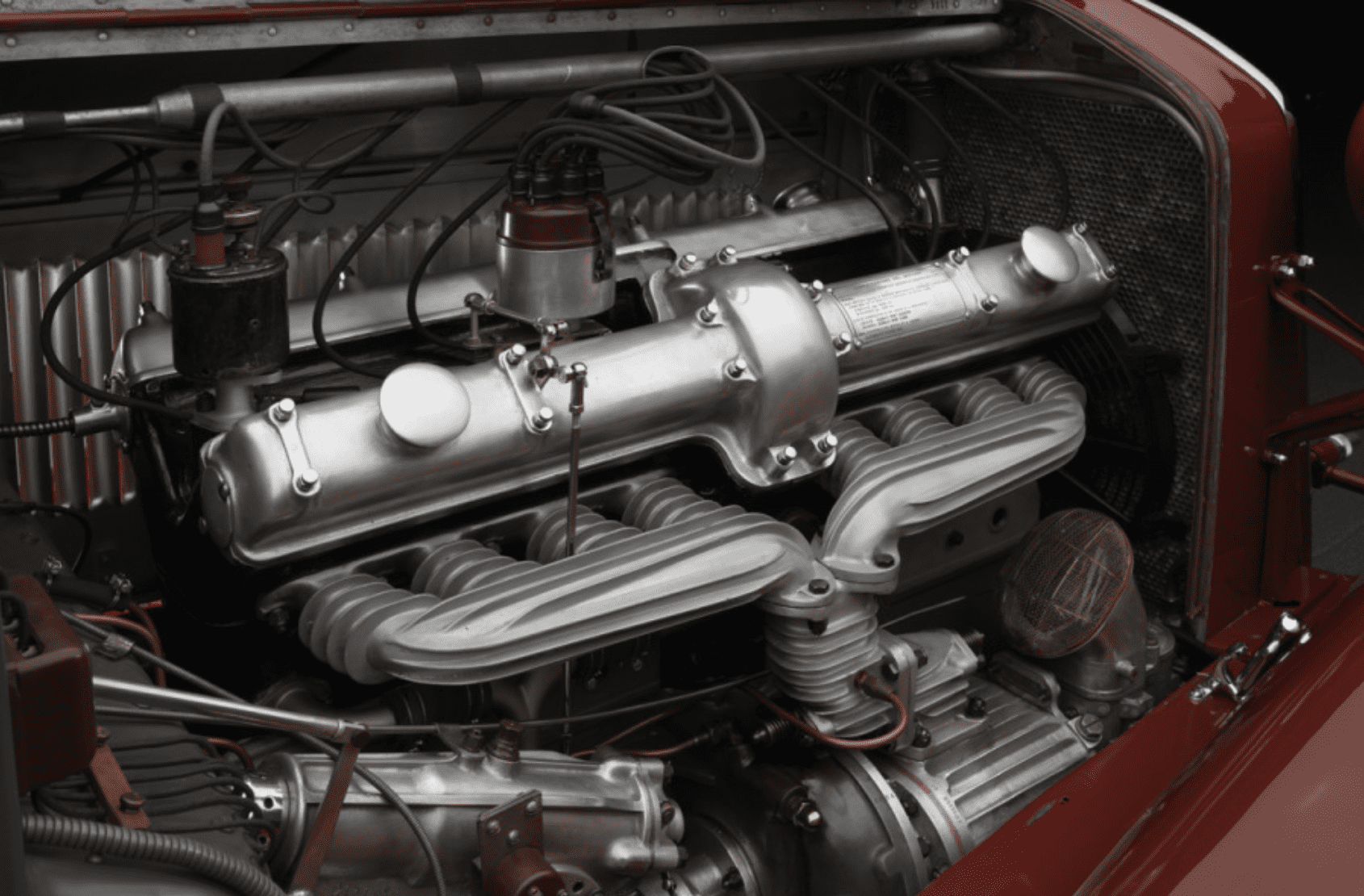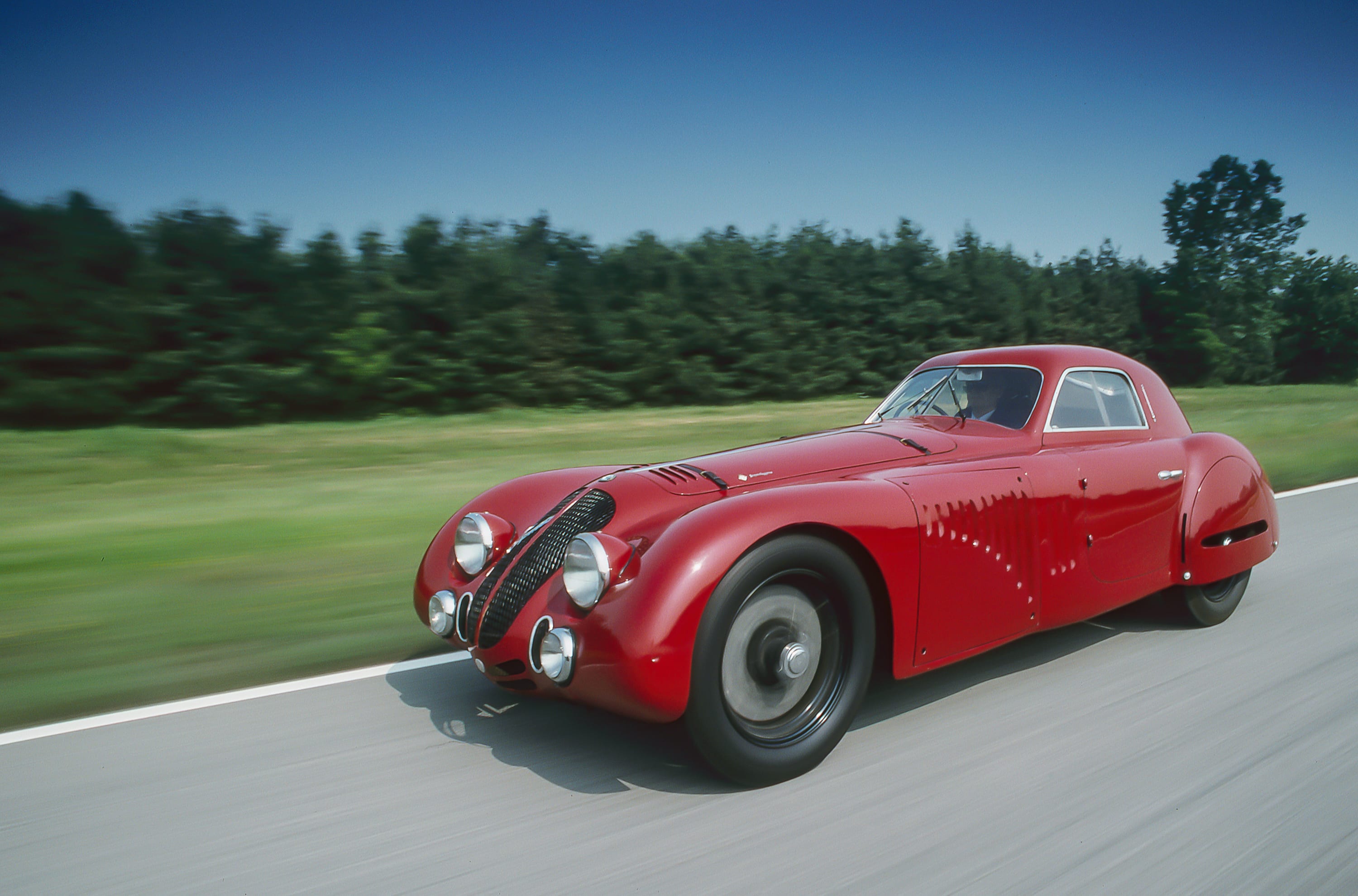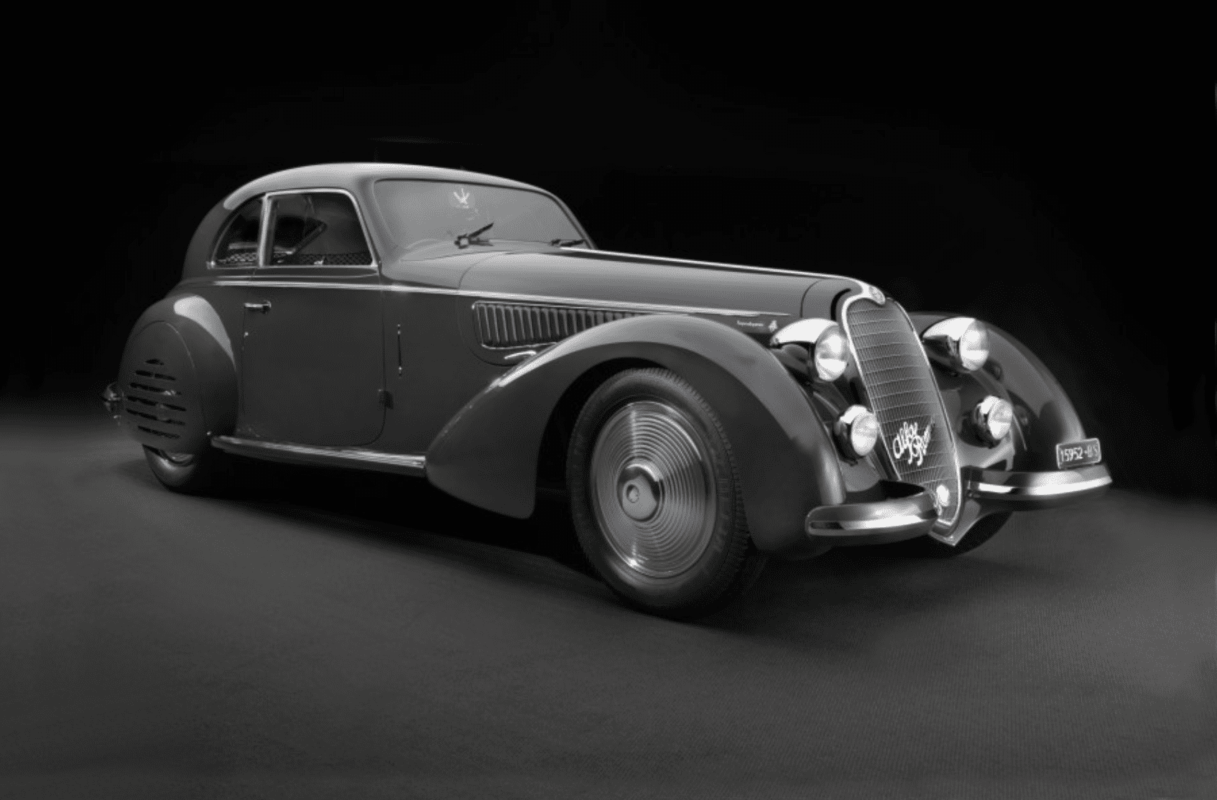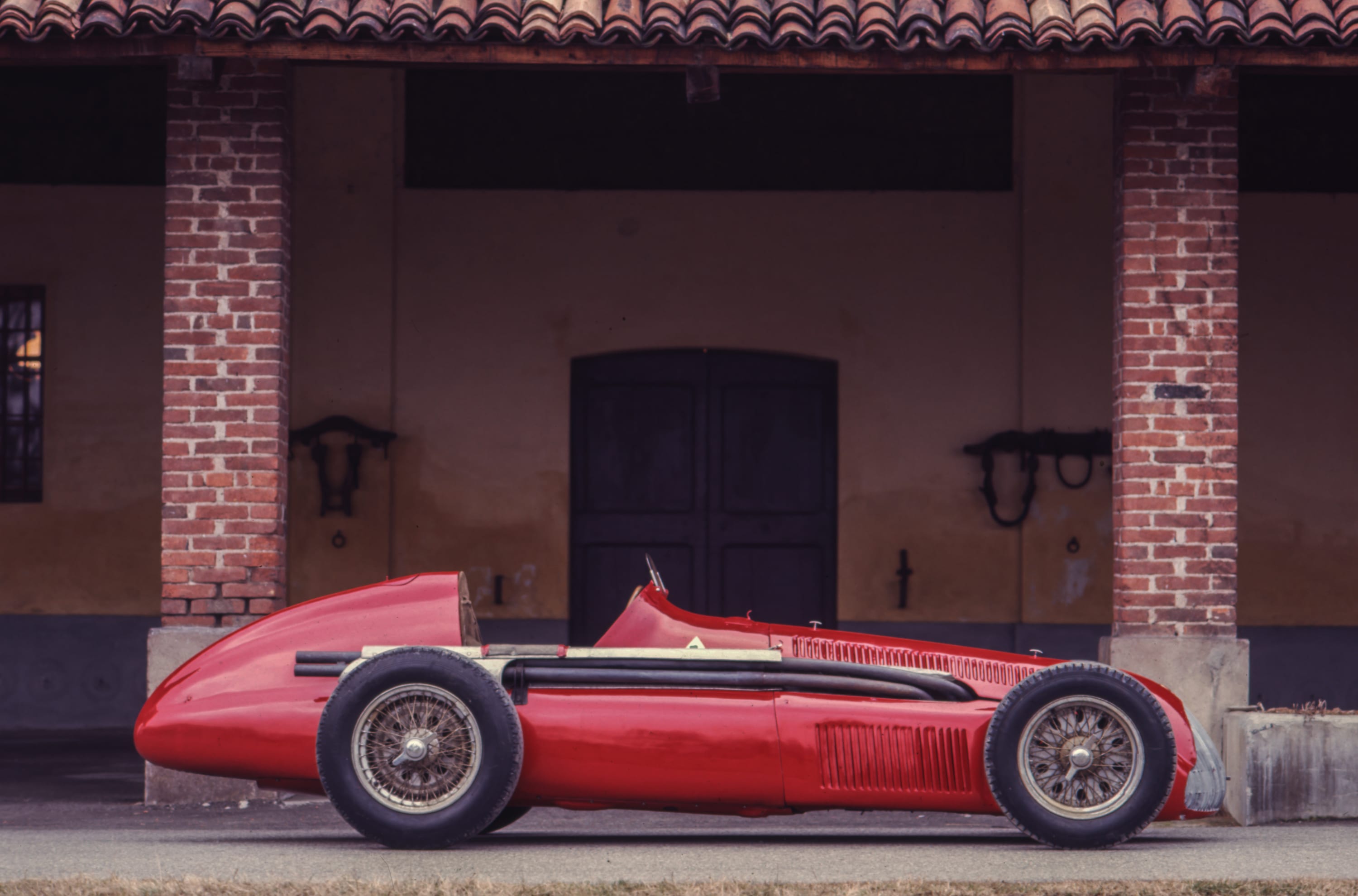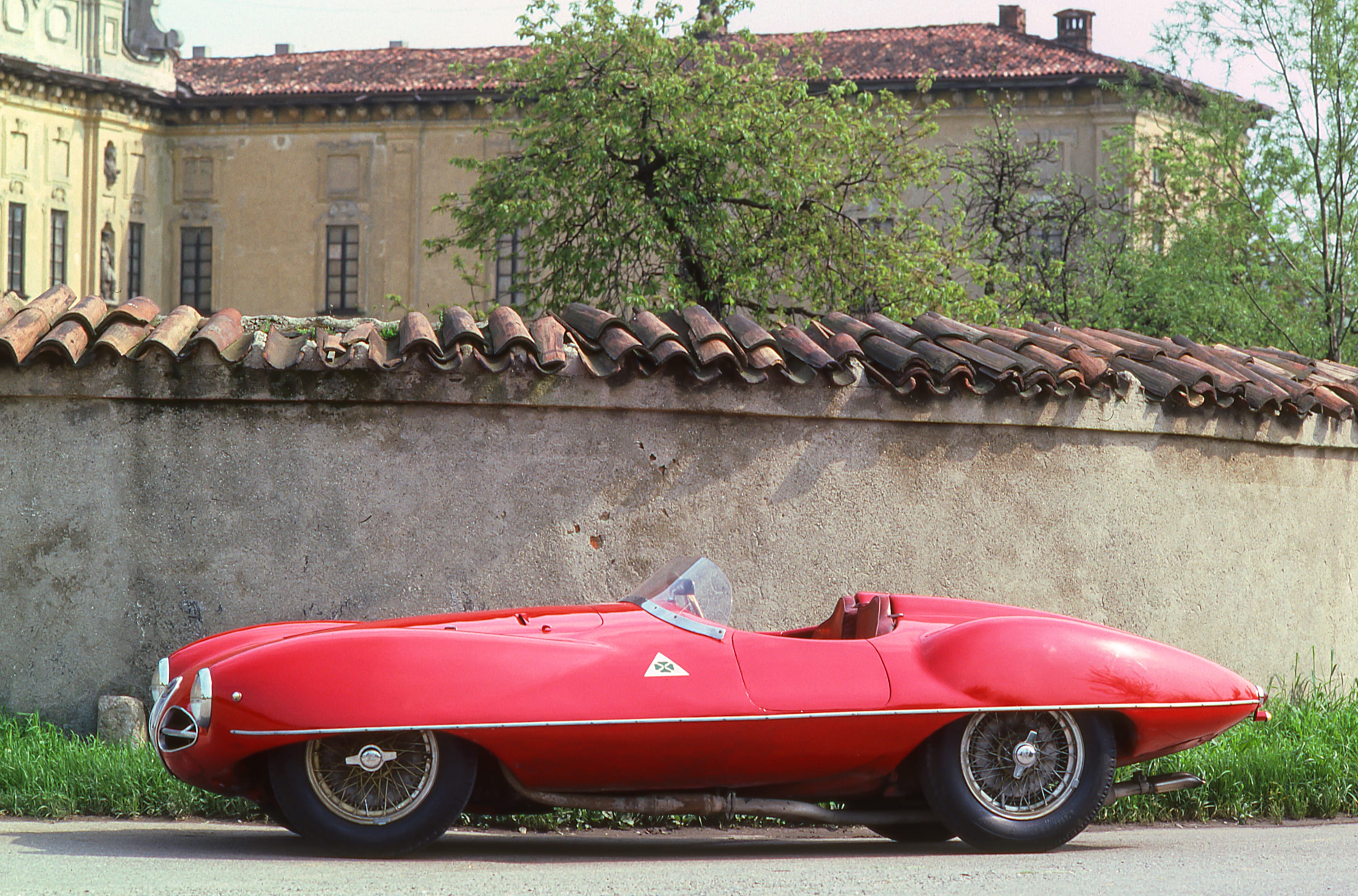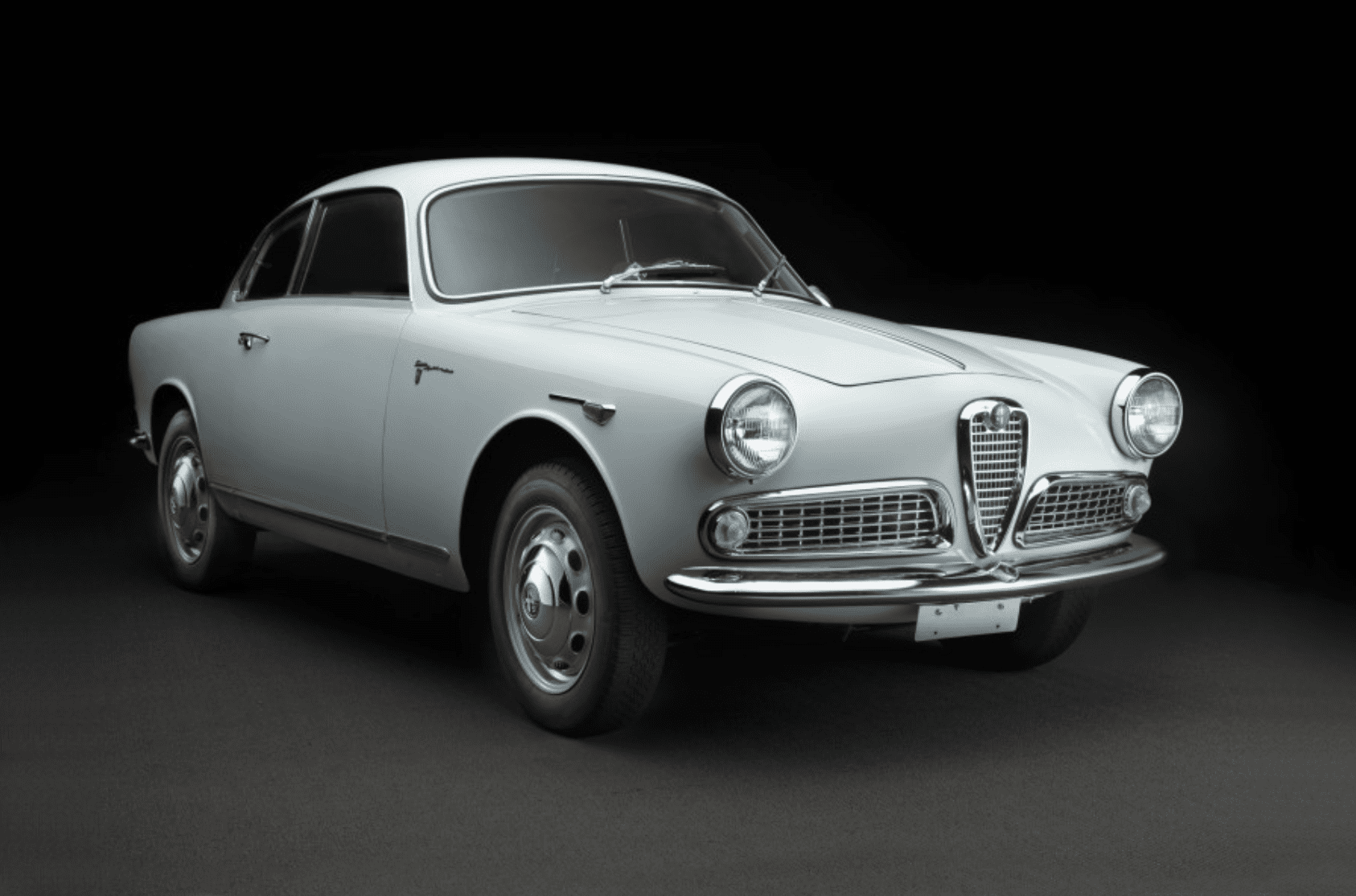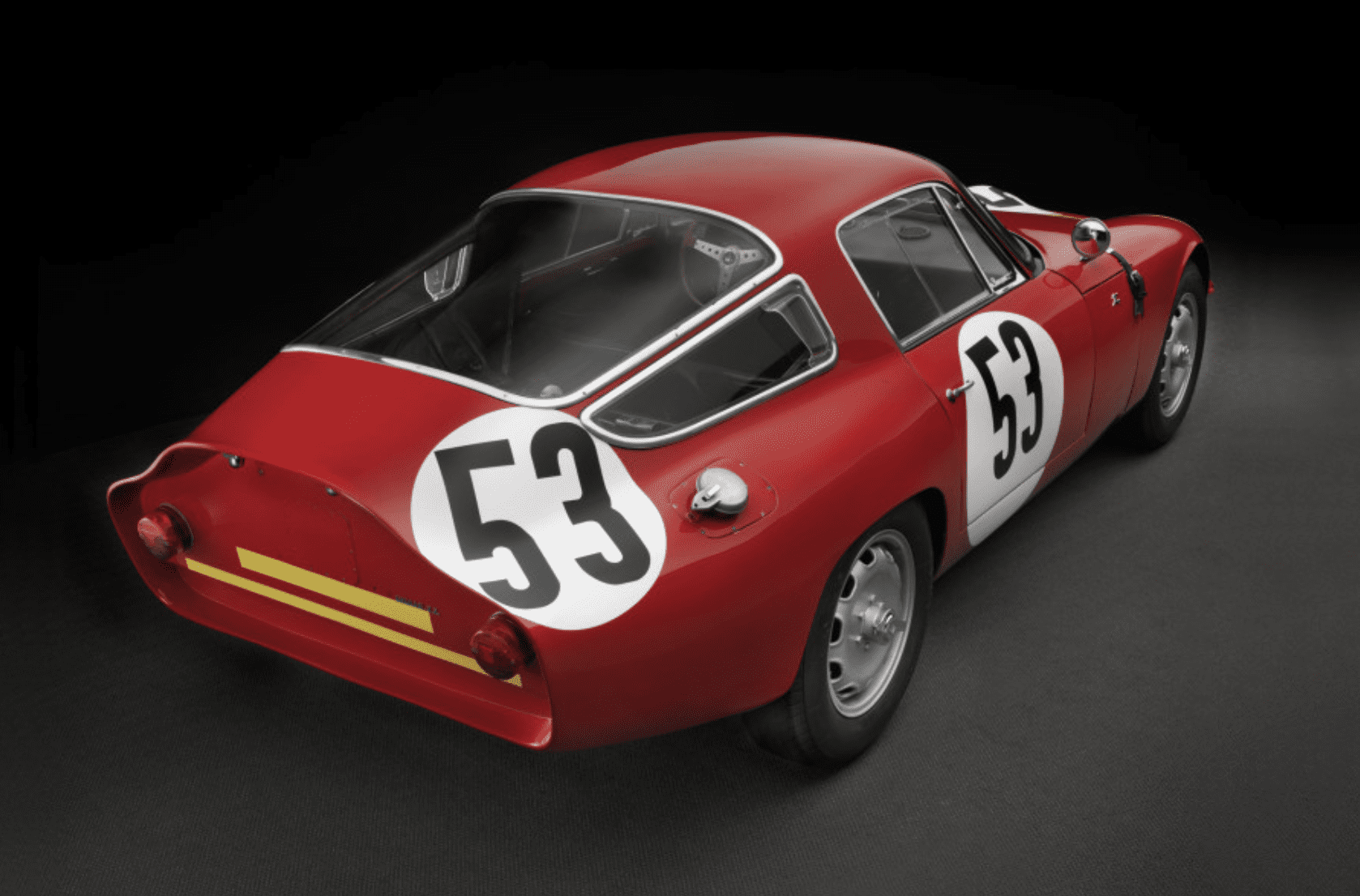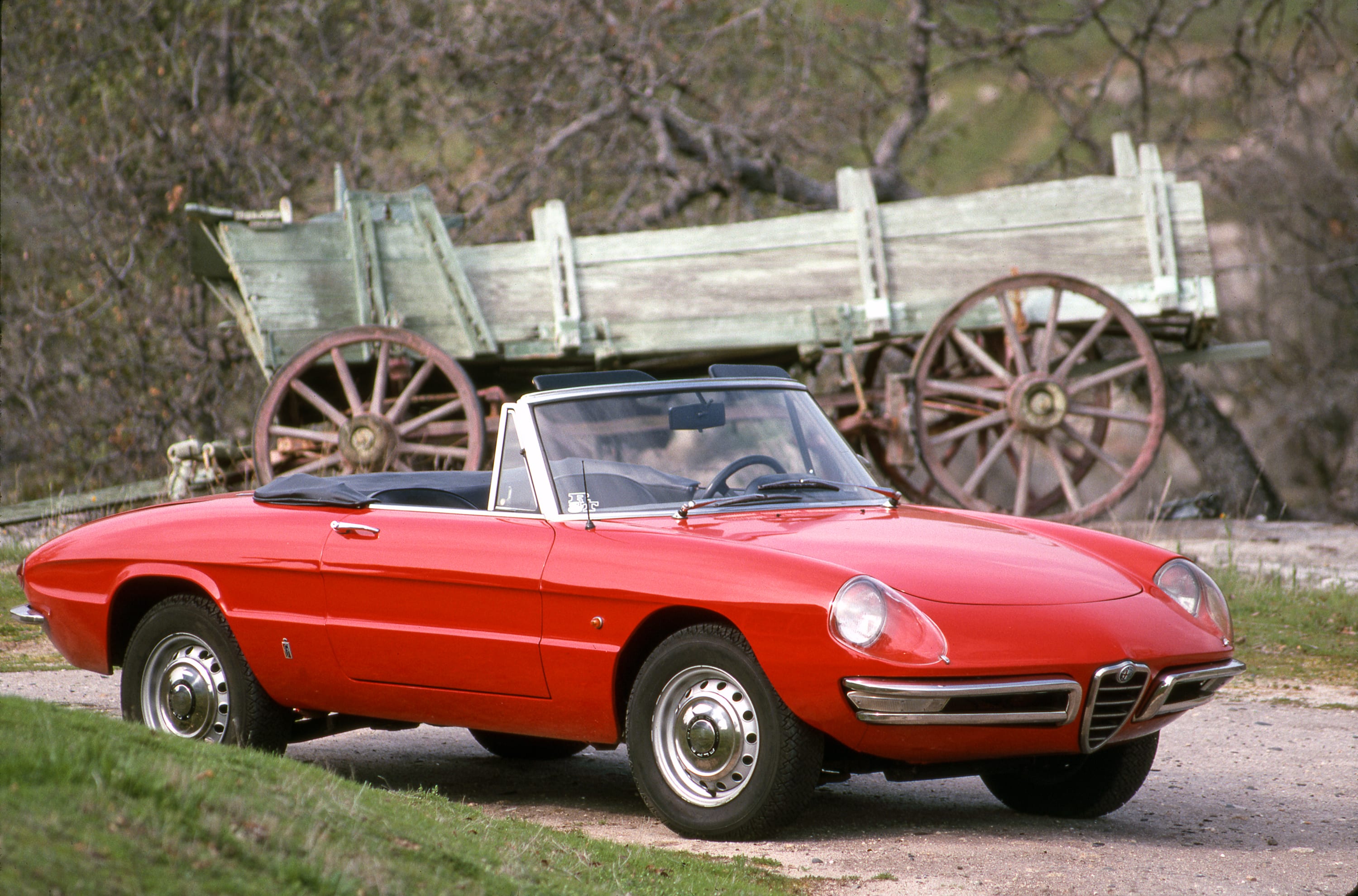Can Alfa Romeo’s U.S. re-launch match the marque’s illustrious heritage?

Alfa Romeo returned to the U.S. in 2014 — after a five-year absence — with its 4C sports car, a fun machine if you are short and like track time. Now we have Alfas for Everyman…or Everywoman.
New to U.S. showrooms are the Alfa Romeo Giulia sedan and Stelvio SUV, peas from the same automotive pod. Many car companies have their sedans and, separately, crossovers and SUVs. Audi Q5/Audi A4? Jaguar F-Pace/XE or XF? Similar, perhaps, like cousins. Alfa’s Stelvio looks to be the Giulia’s taller brother.
CEO Sergio Marchionne has made Alfa Romeo and Maserati cornerstones of Fiat Chrysler Automobiles’ survival. The two storied marques are a matched set, prices of the elegant muscle Italians complementing each other. Alfas span the wide price range from about $38,000 to $82,000, Masers open at $72,000 and top at $152,000.
More specifically on Alfa, the Giulia fours start at $37,995 and rise into the low $50,000s.
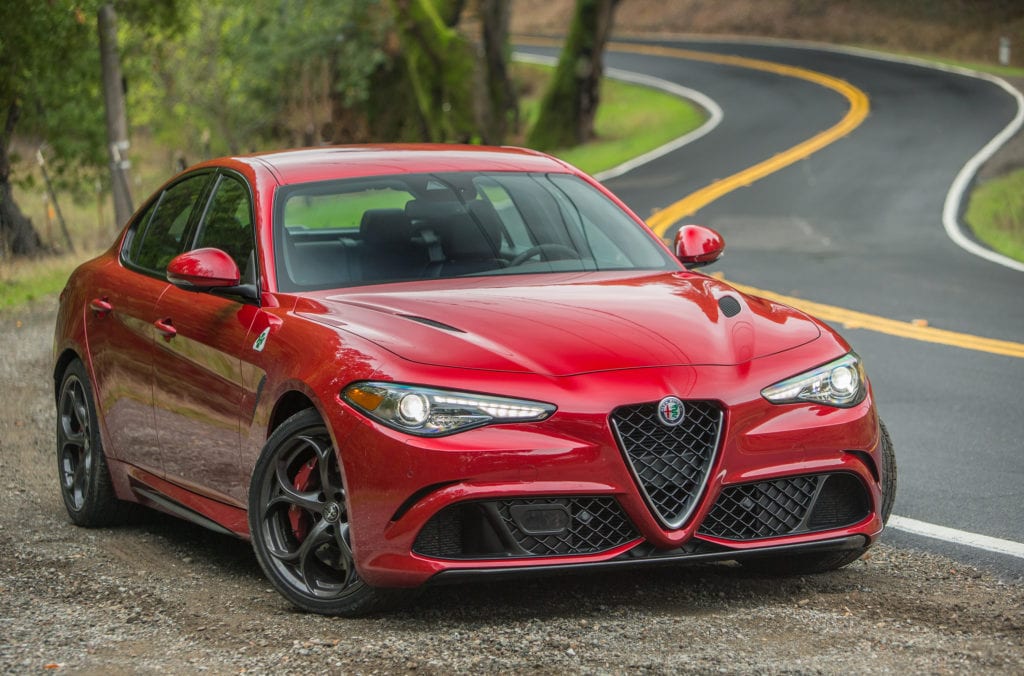
Quadrifoglio sedans open at $72,000. Stelvios begin at $41,995; pricing for the 505-horsepower edition is slated for this autumn. Both Alfa Romeos and Maseratis are related less to Fiat or Chrysler than their corporate commodity-car cousin Ferrari, which befits their heritage.
That heritage is what makes these marques important, and in Alfa’s case it’s prominently on display in the Collier Collection of cars at Revs Institute. Stroll through the museum and you’ll find a masterpiece from Alfa’s famed engineer Vittorio Jano, a 1934 8C 2300 Corto Spyder. There’s also an elegant 1938 Alfa 8C 2900B with a Touring Berlinetta body, which just happened to win the Mille Miglia.
Post-war Alfas at Revs include a 1.3-liter 1958 coupe, bearing the enticing name Giulietta Sprint Veloce, and the 1964 Sebring class-winning GTZ that helped urge Alfa back into racing.
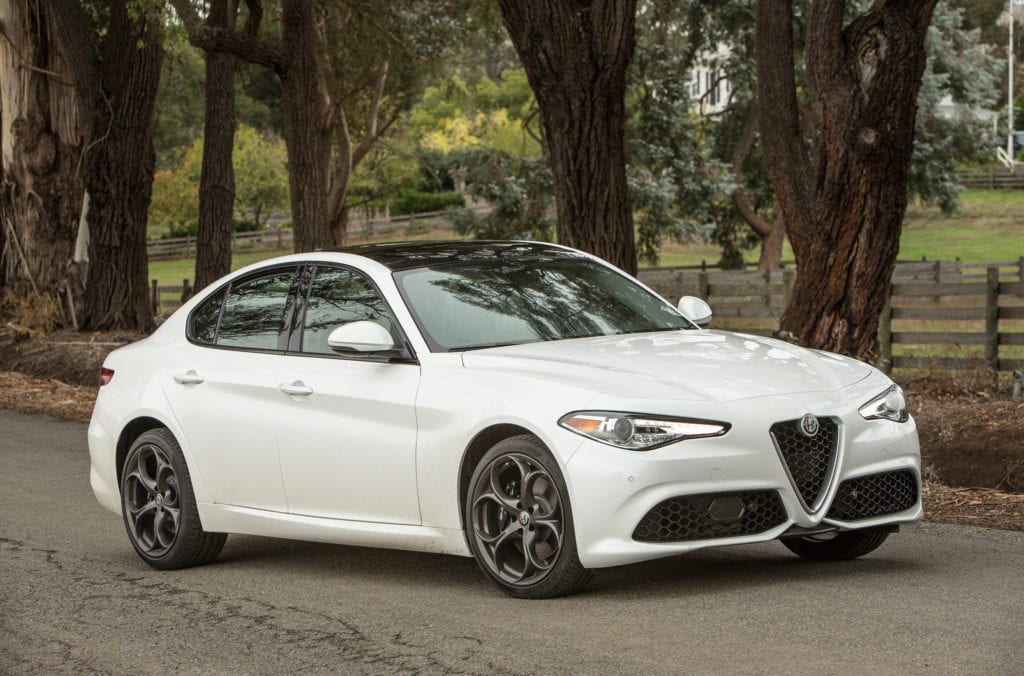
Back to the present, the Giulia and Stelvio are based on the rear drive-biased Giorgio platform, which puts 100% traction on the rear wheels for normal driving, but can alter to 60% front/40% rear-drive for added grip. Alfa’s pair shares the same 111.0-inch wheelbase, though the SUV is two inches longer and nearly nine inches taller than the Giulia.
Alfa endowed the pair with expected sporty tech specs: Double-wishbone front suspension and an “Alfa Link” independent rear. Rack and pinion steering. A 50/50 weight distribution thanks to a carbon fiber driveshaft.
There are two engines, including a 16-valve turbo 2.0 four with 280 horsepower and 306 lb-ft of torque from 2,000-4,800 rpm. The Quadrifoglio high-performance versions use a twin-turbo 2.9-liter V-6 boasting 505 horsepower at 6,500 rpm and (gulp) 443 lb-ft of torque. In the Giulia, that 2-liter four gets you to 60 mph in 5.1 seconds, the V-6 3.8 seconds, both with jail-able top speeds.
Both cars sport eight-speed automatic transmissions, with all-wheel drive an option on the Giulia and standard under the Stelvio. Alfa makes no pretense that this offers off-road performance; instead, it’s strictly for high-speed touring.
Either Alfa seems to want to be driven. It could be the feel of the steering wheel. Or the all-business, full-info instrument cluster. Or the way the seats hold you firmly in place. The two modern Alfas handle better than pre-1980s Alfa Romeos without a giving away ride comfort. Spend a week in a Giulia Quadrifoglio and devote no time talking with a cop, and you’ve accomplished something.
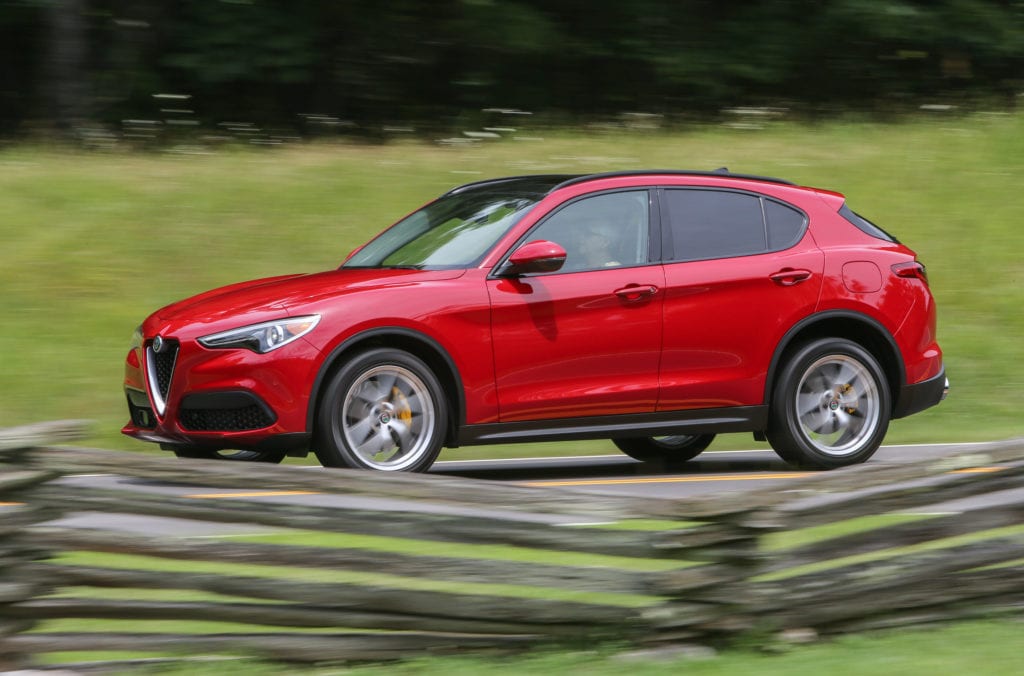
The key question: Are the new Alfas superior to their Mercedes, BMW, Audi and Jaguar counterparts? In that regard, Alfa Romeo has three mountains to climb.
First, Alfa is, well, “out-dealered.” Mercedes-Benz has 380 U.S. dealers, BMW 339 and Audi 290, many of them well established. Alfa currently has only 184, headed to 215 by year’s end, some twinned with Maserati, many quite new.
But this drawback could be an advantage. At a time when everybody seems to be driving an Audi, Alfa’s relative scarceness could add appeal.
Mountain Two is quality. Knowing it must answer the question about the reliability of Italian cars, Alfa’s basic warranty for its new twins is 4 years/50,000 miles. That matches most rivals except that of Jaguar, which has a similar reputational issue and offers 5 years/60,000 miles.
Mountain Three is the matter of getting drivers out of German and English vehicles and into Italian machines. Do consumers know or care about Alfa’s history?
“A premium brand’s biggest draw is the image it conveys, which makes an unknown like Alfa Romeo a tougher sell for many high-end shoppers,” says Karl Brauer, senior director of automotive industry insights for Kelley Blue Book. “This isn’t an insurmountable challenge. It will require not only exceptional product and exceptional marketing, but also a long-term commitment to the U.S. market.” See the relative scarceness issue above.
On that score, Alfa sold less than 4,000 vehicles in the U.S. through June 2017. That isn’t bad considering Alfa hadn’t sold 100 vehicles in a month in either 2015 or 2016. Still, BMW’s first-half U.S. sales this year topped 149,000 cars and SUVs — some 37 times more than Alfa.
Having driven the Giulia and Stelvio, our verdict is that Alfa Romeo’s American rebirth is for real. Now all the automaker has to do is deal with reality.
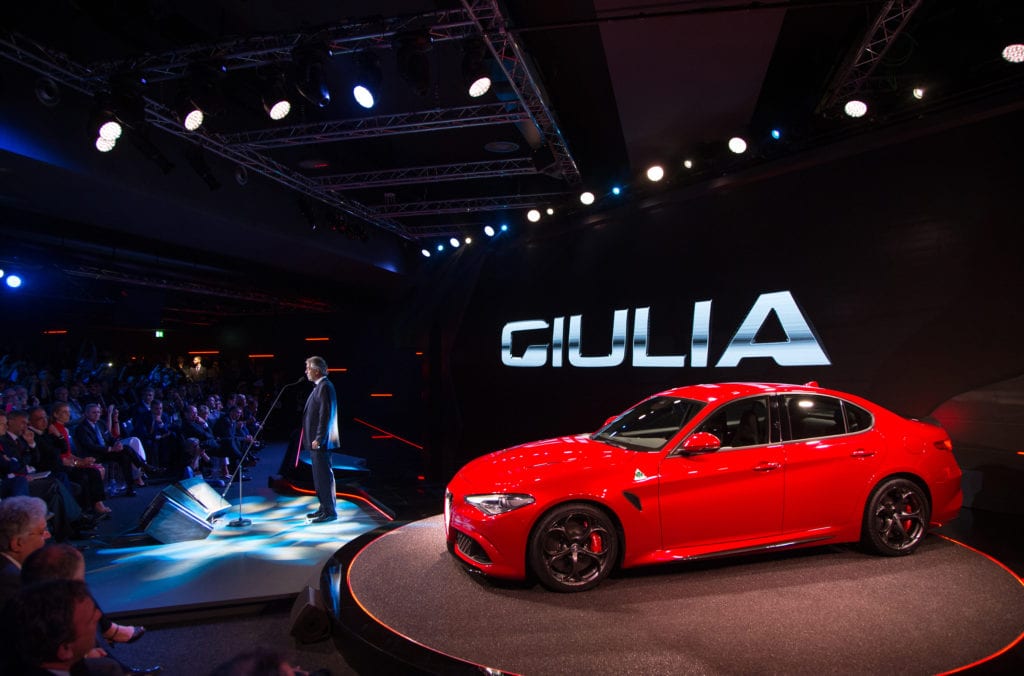
######
